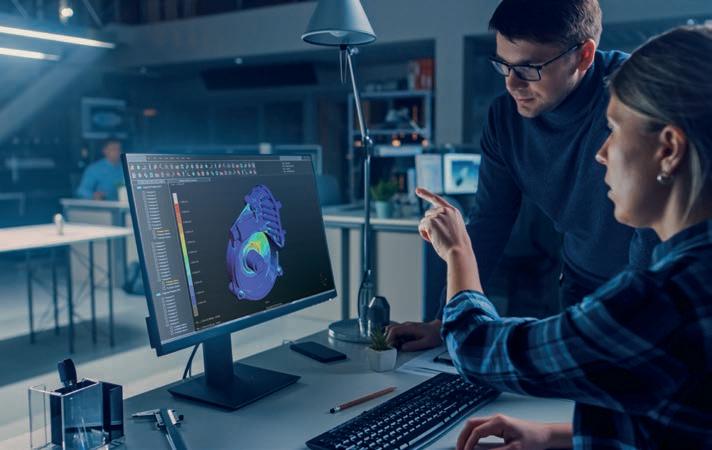
2 minute read
Why choose RadiciGroup Engineering Service.
A professional support such as the one provided by the Group, making use of advanced CAE tools, can deliver many benefits for the development of demanding projects:
•
•
Minimizing trial and error and the use of physical prototypes, thanks to reliable CAE simulations. Detecting and correcting any feasibility obstacles in virtual environment, when the cost of making changes is still relatively low.
•
Implementing ecodesign principles, on the path to creating more sustainable products together with our costumers.
•
•
Performing an accurate material selection, choosing the best grade in our outstanding product range to meet the project requirements.
Relying on updated, precise and specific material data to perform technical calculations and simulations internally.
•
•
Keeping costs under control, exploring and comparing alternative solutions to choose the best option.
Troubleshooting unexpected issues during prototyping or early production stages.
Process simulation: injection moulding and more.
• Use of the most well-known CAE tools on the market for simulating injection moulding and related technologies.
• Predicting the filling, packing and cooling behaviour and estimating moulding warpage.
• Assessing optimal process parameters, suggesting injection type and locations, predicting process-related defects, etc.
• Making use of cutting-edge software modules to closely reproduce the viscoelastic material response, crystallization rate, fibre-flow interactions, core-shift effects on inserts, and more.
• Simulation of other processes, such as 3D printing and extrusion, is under investigation.
Structural simulation: static, dynamic and multiphysics.
• Evaluation of static stiffness and strength evaluation of parts against design and abuse loads
• Non-linear structural simulation and multi-body contact modelling to simulate small assemblies.
• Modal and harmonic analysis to assess frequency response to vibrations
• Modelling of high-speed impact and crash phenomena can be modelled with implicit and explicit FEM codes, keeping in consideration the strain rate dependency of material properties.
• Thermal and thermo-mechanical effects on the model’s structural behaviour can be considered.
Integrated simulation: linking process to structure.
• Integrated simulation can take into account material anisotropy, induced by glass-fibre orientation during injection moulding or by local TPC reinforcement.
• Weld line locations, residual stress, warpage effects can be considered as well.
• These advantages are made possible by multiscale material modelling technology, supported by specialized software.
• An integrated analysis provides higher accuracy and reliability, thanks to a more in-depth understanding of material characteristics, and thus reduces overengineering and the need for prototype testing.
Injection simulation: warpage, GF orientation, weld lines...
FEA model: loads, boundaries
Multi-scale material modelling
Long-term behaviour: fatigue, creep and ageing.
• Thermoplastic materials show peculiar phenomena that are important to consider for improving performance in the long run.
• Subjecting materials to cyclic loading for a great number of cycles results in fatigue damage, which may lead to premature failure.
• The constant application of a steady stress for a long time can cause materials to “flow”, changing their apparent stiffness and ultimately, possibly, causing them to fail – this is the creep phenomenon.
• The exposure of thermoplastics to heat or chemical substances for a prolonged time (ageing) may damage or otherwise affect their properties, changing their response to external loads.
• Our CAE software and procedures provide us with specific workflows and tools to deal with these kinds of aspects and accurately predict the long-term capabilities of a part.



